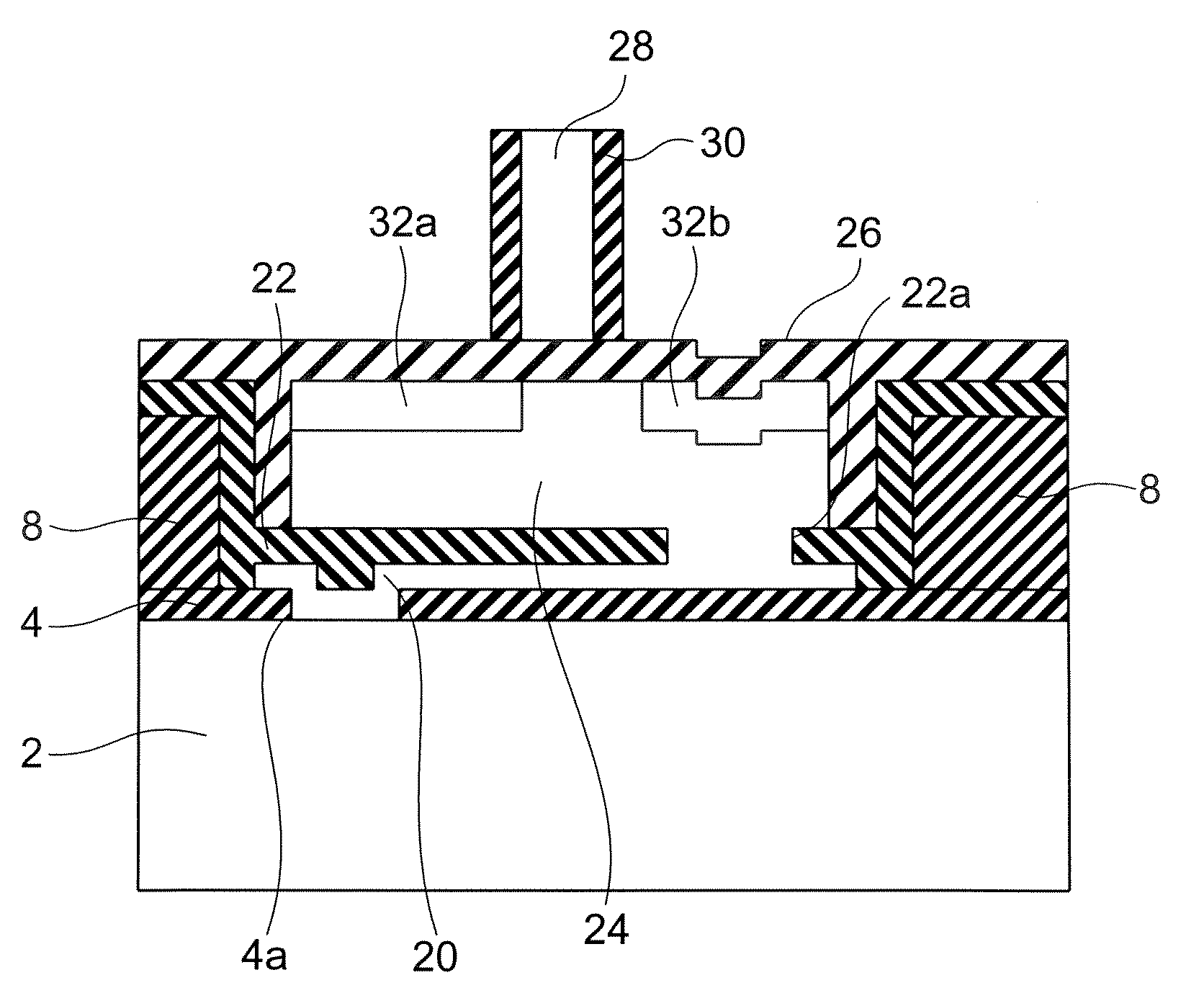Semiconductor device and method for manufacturing the same
- Summary
- Abstract
- Description
- Claims
- Application Information
AI Technical Summary
Benefits of technology
Problems solved by technology
Method used
Image
Examples
first embodiment
[0029]Referring to FIGS. 1 through 8, a semiconductor device in accordance with a first embodiment of the present invention is described. The semiconductor device of this embodiment has a structure in which a SOI substrate is formed with a supporting substrate and a SOI layer having different plane orientations from each other, an n-type MOSFET is formed on the SOI layer, a Ge layer is formed by virtue of the plane orientation of the supporting substrate, and a p-type MOSFET is formed on the Ge layer. In the following, a method for manufacturing the semiconductor device of this embodiment is described.
[0030]First, as shown in FIG. 1, a SOI substrate 1 that includes a supporting substrate 2 made of single-crystal silicon having the (110) plane orientation, a buried oxide film (BOX layer) 4, and a SOI layer 6 made of single-crystal silicon having the (100) plane orientation, is prepared. After STI (Shallow Trench Isolation) layers 8 for isolating each region 100 in which an n-type MOS...
second embodiment
[0044]Referring now to FIG. 9, a semiconductor device in accordance with a second embodiment of the present invention is described.
[0045]The semiconductor device of this embodiment is substantially the same as the semiconductor device of the first embodiment, except that the film thickness M of the epitaxially grown layer 20 and the distance L in the film plane direction between the opening 22a formed in the insulating film 22 and the opening 4a formed in the buried oxide film layer 4 satisfies the following conditions. More specifically, there is relationship between the film thickness tep of the epitaxially grown layer 20 and the distance L between openings formed in the insulating films 4 and 22:
tep×tan θ
[0046]where θ represents the angle of a (111) plane to be a slip plane 40 with respect to the film plane of the epitaxially grown layer 20. In a case where the epitaxially grown layer 20 has a (100) plane orientation, the angle θ is 54.7°. In a case where it has the (110) plane o...
third embodiment
[0048]Referring now to FIG. 10, a semiconductor device in accordance with a third embodiment of the present invention is described.
[0049]The semiconductor device of this embodiment is substantially the same as the semiconductor device of the first embodiment, except that there is the following relationship among the film thickness tep of the epitaxially grown layer 20, the thickness tin of the insulating film 4, and the opening width w1 of the opening 4a formed in the buried oxide film layer 4:
(tin+tep)≧w1×tan θ
[0050]With this arrangement, at least a part of the opening 22a formed in the insulating film 22 exists vertically above the opening 4a.
[0051]Here, θ represents the angle of the (111) plane 40 with respect to the epitaxially grown layer 20. In a case where the epitaxially grown layer 20 has the (100) plane orientation, the angle θ is 54.7°. In a case where it has the (110) plane orientation, the angle θ is 35.3°. In a case where it has the (111) plane orientation, the angle ...
PUM
 Login to View More
Login to View More Abstract
Description
Claims
Application Information
 Login to View More
Login to View More - R&D
- Intellectual Property
- Life Sciences
- Materials
- Tech Scout
- Unparalleled Data Quality
- Higher Quality Content
- 60% Fewer Hallucinations
Browse by: Latest US Patents, China's latest patents, Technical Efficacy Thesaurus, Application Domain, Technology Topic, Popular Technical Reports.
© 2025 PatSnap. All rights reserved.Legal|Privacy policy|Modern Slavery Act Transparency Statement|Sitemap|About US| Contact US: help@patsnap.com



